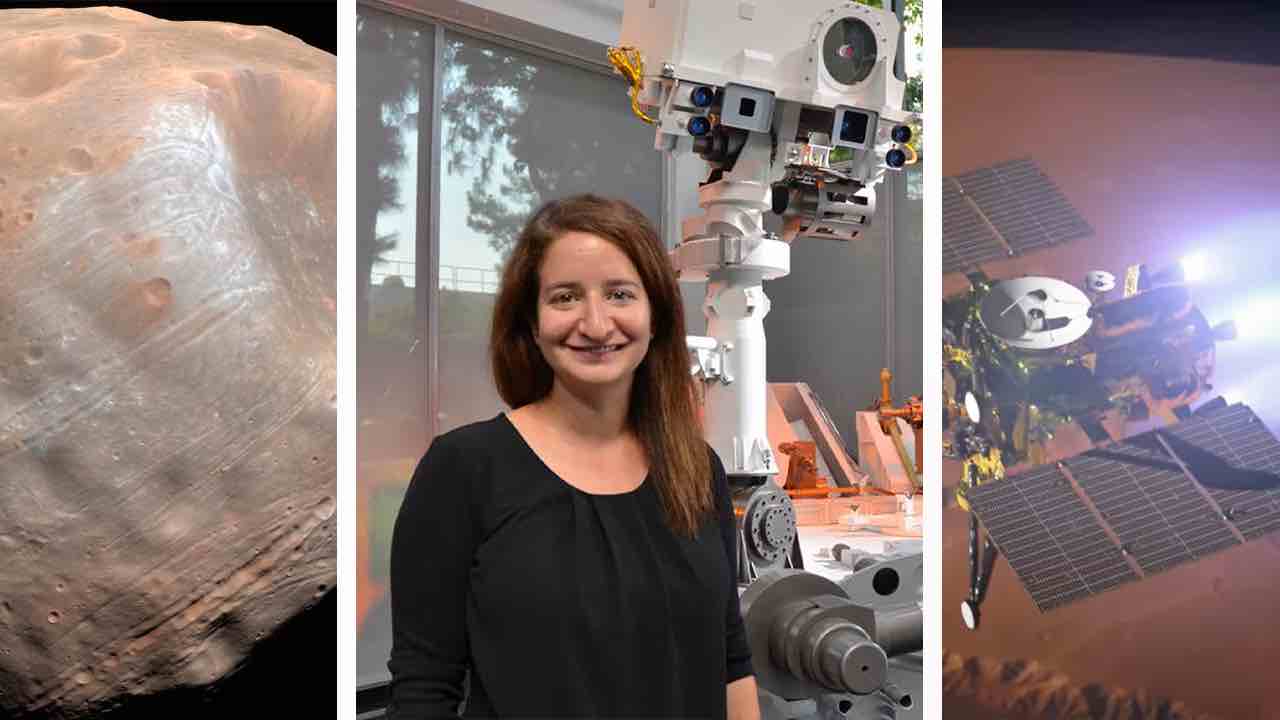We met Abigail Fraeman, Research Scientist and Deputy Project Scientist for the Mars Science Laboratory’s Curiosity rover at NASA’s Jet Propulsion Laboratory (JPL) in Pasadena (California, USA). She studies the origin and evolution of terrestrial bodies in our solar system. Recently, Fraeman was selected by NASA to conduct research using the MMX flight instruments.
The JAXA’s Martian Moons Exploration (MMX) mission will be launched in 2024 with the goal of visiting the two moons of Mars Phobos and Deimos. In addition, a lander will land on Phobos and collect samples, which will be brought to Earth in 2029.
How do you understand what happened millions or billions of years ago on Mars, by studying Martian rocks?
Just like studying the geology of places on Earth, we can look at the compositions, textures, and shapes of Martian rocks to understand how they formed and the processes that changed them over time. We study these properties both from spacecraft that are orbiting Mars, and from rovers and landers on the surface.
How can we understand how the moons of Mars were born?
We don’t know yet how the two moons of Mars, Phobos and Deimos, formed! We think they are either asteroids that were captured into orbit around Mars, pieces of Martian crust that were blasted into space by an impact, or perhaps they formed around Mars as the planet itself formed. Each of these ideas results in a different prediction of what the moons would be made of, and what their interior structure might be. JAXA’s Mars Moon eXplorer (MMX) mission will measure both of these things.
Credits: NASA/JPL-Caltech/ASU/MSSS/SSI
Is it true that Phobos will be destroyed in 30 or 50 million years? I’ve read that Phobos doesn’t have hard rock but is surrounded by a layer of powdery regolith.
Yes, Phobos’ orbit is slowly spiraling in to Mars, and in 10s of millions of years, tidal forces will tear the moon apart. (Interestingly, Deimos is spiraling away from Mars, getting further and further away from the planet). We don’t know for certain what the surface of Phobos is like, but models suggest it does have a layer of powdery regolith. Data from MMX will tell us for sure!
Our Moon creates tides on Earth. Do Phobos and Deimos Affect the Planet Mars?
Not to my knowledge, but I’m not an expert in this field. Phobos and Deimos are both much, much smaller than our own Moon, so any gravitational affect they have on Mars is very, very small.
You have been selected by NASA to conduct research on Phobos, using the tools of the MMX mission. How will you study the moon of Mars? What are the most important mysteries to uncover?
I will work with the MMX team to understand the elemental and mineralogical composition of Phobos using data collected while MMX is in orbit around Phobos. I hope this work will help the team select the landing sites to collect samples, and can be used to help understand the origin of Phobos.
Credit: JAXA
What did the geology of Mars teach you? What do you love about your job?
Through our study of Martian geology with orbiters and rovers, we’ve learned that the environment on Mars was once similar to Earth. Billions of years ago, Mars had a thicker atmosphere, liquid water on its surface, and all of the ingredients that would have been critical to support life. The questions we’re trying to answer now are understanding what factors drove Mars to evolve so differently from Earth, how Mars works as a planetary system today, and whether Mars ever once had life. My favorite part about my job is working with teams of brilliant scientists and engineers from around the world to answer these fascinating questions!
- Cover image: Abigail Fraeman (central photo: mars.nasa.gov); side photo: NASA/JPL-Caltech/University of Arizona (first image) / JAXA YouTube (second image)

